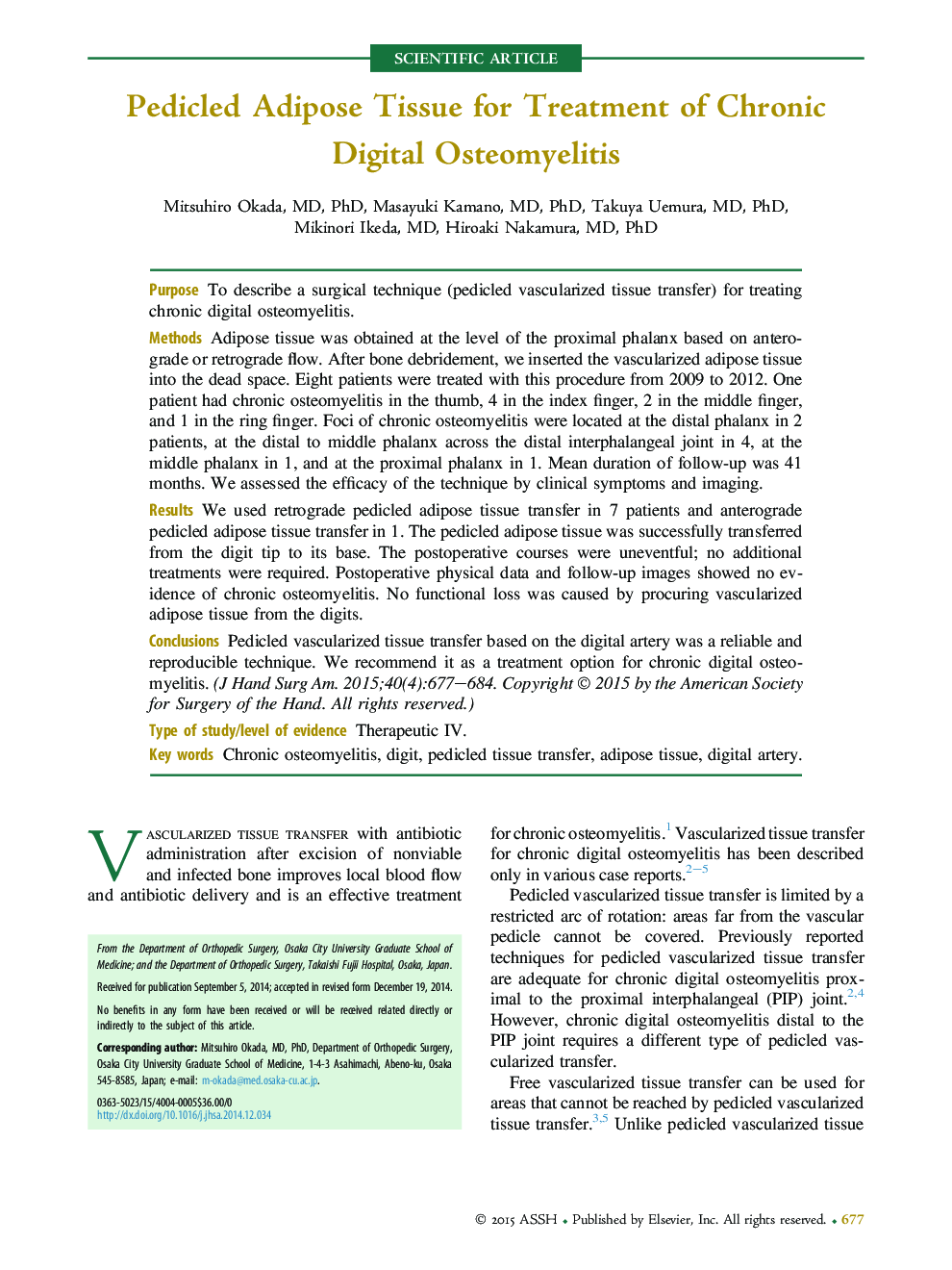| Article ID | Journal | Published Year | Pages | File Type |
|---|---|---|---|---|
| 4066973 | The Journal of Hand Surgery | 2015 | 8 Pages |
PurposeTo describe a surgical technique (pedicled vascularized tissue transfer) for treating chronic digital osteomyelitis.MethodsAdipose tissue was obtained at the level of the proximal phalanx based on anterograde or retrograde flow. After bone debridement, we inserted the vascularized adipose tissue into the dead space. Eight patients were treated with this procedure from 2009 to 2012. One patient had chronic osteomyelitis in the thumb, 4 in the index finger, 2 in the middle finger, and 1 in the ring finger. Foci of chronic osteomyelitis were located at the distal phalanx in 2 patients, at the distal to middle phalanx across the distal interphalangeal joint in 4, at the middle phalanx in 1, and at the proximal phalanx in 1. Mean duration of follow-up was 41 months. We assessed the efficacy of the technique by clinical symptoms and imaging.ResultsWe used retrograde pedicled adipose tissue transfer in 7 patients and anterograde pedicled adipose tissue transfer in 1. The pedicled adipose tissue was successfully transferred from the digit tip to its base. The postoperative courses were uneventful; no additional treatments were required. Postoperative physical data and follow-up images showed no evidence of chronic osteomyelitis. No functional loss was caused by procuring vascularized adipose tissue from the digits.ConclusionsPedicled vascularized tissue transfer based on the digital artery was a reliable and reproducible technique. We recommend it as a treatment option for chronic digital osteomyelitis.Type of study/level of evidenceTherapeutic IV.
